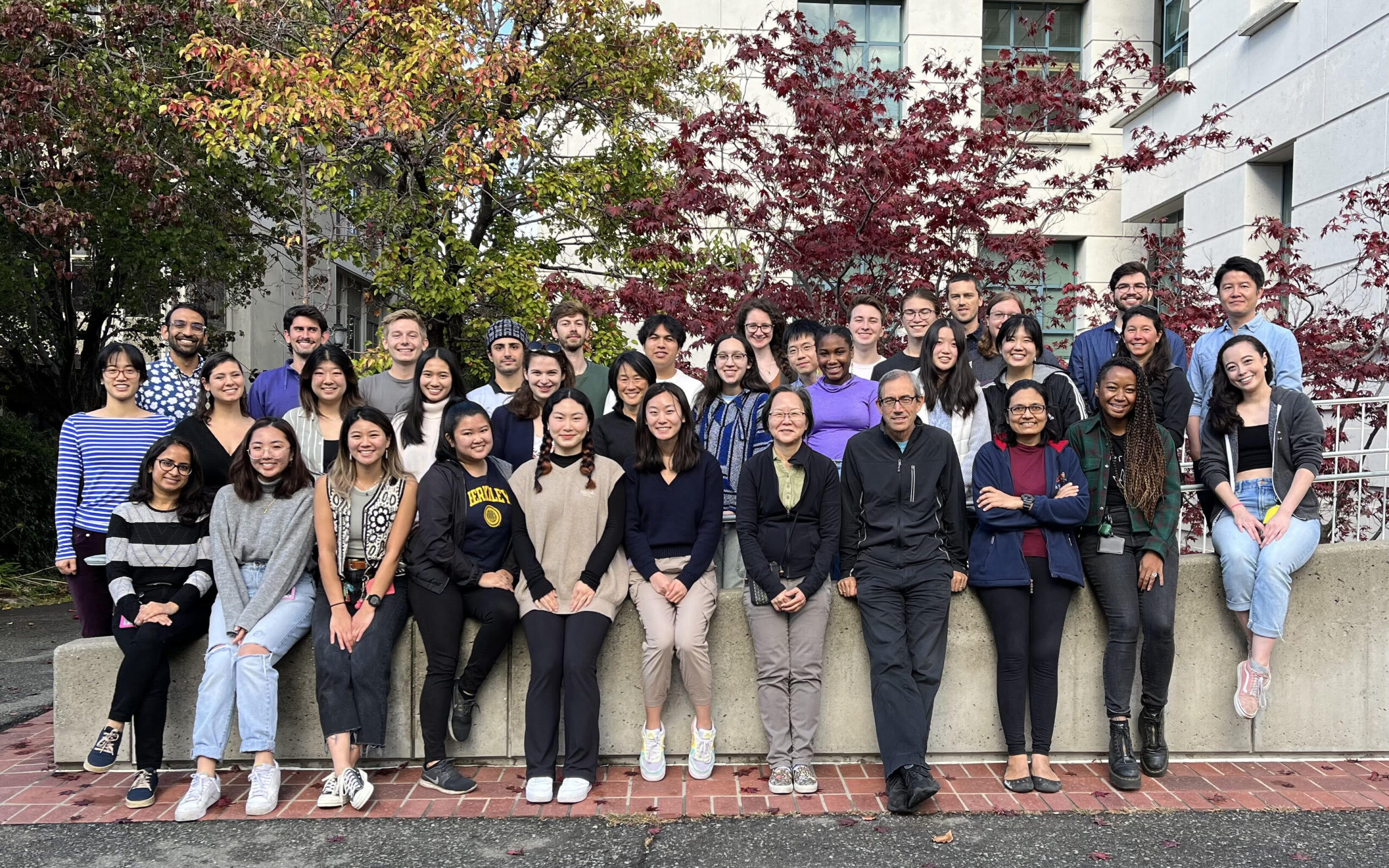Welcome to the Niyogi lab!
Fighting climate change with photosynthesis
The lab’s long-term research goals are to understand how photosynthetic energy conversion works, how it is regulated, and how it might be improved to help meet the world’s needs for food, fuel, and carbon sequestration to fight climate change.
Current lab members use a wide array of experimental organisms and interdisciplinary approaches to (1) investigate fundamental questions about the regulation of photosynthesis, (2) elucidate molecular mechanisms underlying the operation of the oceanic biological carbon pump, and (3) apply this fundamental knowledge to increase photosynthetic efficiency and carbon sequestration by plants and algae.
We maintain a friendly and interactive lab that values scientific excellence, diversity, creativity, open access, and interdisciplinary collaboration.

News
- Chlorophyll to zeaxanthin energy transfer in nonphotochemical quenching: An exciton annihilation-free transient absorption studyFormer Ph.D. student Dhruv Patel-Tupper and Fleming lab Ph.D. students Tsung-Yen Lee and Lam Lam co-led this study published in PNAS in which they were able to obtain transient absorption spectroscopy signals without the complication of exciton-exciton annihilation, showing that excitation energy transfer from chlorophyll to zeaxanthin is indeed associated with NPQ in Nicotiana benthamiana.
- Raquel is staying in the lab as a Ph.D. student!We are thrilled that first-year PMB graduate student and former Niyogi lab tech Raquel Ponce has decided to stay in the lab for her thesis research!
- Iron rescues algal photosynthesis during high lipid productionFormer Ph.D. student Tim Jeffers’ work on photosynthesis and lipid accumulation in Chromochloris was recently featured on the website of the Environmental Molecular Science Laboratory (EMSL), a key collaborator on the paper. Congratulations Tim!
- Iron rescues glucose-mediated photosynthesis repression during lipid accumulation in the green alga Chromochloris zofingiensisFormer Ph.D. student Tim Jeffers’ paper was just published in Nature Communications. This exciting work uses proteomics to provide new insights into the Chromochloris switch and identifies hundreds of proteins likely involved in photosynthesis or TAG accumulation.
- Implicating the red body of Nannochloropsis in forming the recalcitrant cell wall polymer algaenanFormer Ph.D. student Chris Gee led this interdisciplinary, collaborative study published in Nature Communications, bringing together a suite of imaging and analytical approaches that suggest a role of the eustigmatophyte red body in storing and delivering precursors for algaenan polymerization on daughter cells.
- Multiplexed CRISPR/Cas9 mutagenesis of rice PSBS1 non-coding sequences for transgene-free overexpressionFormer Ph.D. student Dhruv Patel-Tupper led this study published in Science Advances showing that unbiased promoter editing can be used to generate overexpression alleles in a crop plant. This is the first step towards non-transgenic VPZ crops with higher photosynthetic efficiency and yield!
- Congratulations to Karina, Erin, Tonio, and Efren on passing their qualifying exams!Second-year Ph.D. students in the Niyogi lab have all successfully passed a major milestone and are now officially Ph.D. candidates. Woohoo!
- Congratulations to Niyogi lab tech cohort who will be moving on to grad school in the fall!Cailyn, Anna, and Raquel have accepted admissions offers to Ph.D. programs at UC San Diego, UW, and UC Berkeley. Congratulations!
- A hemoprotein with a zinc-mirror heme site ties heme availability to carbon metabolism in cyanobacteriaResearch Scientist Masakazu Iwai contributed to this Nature Communications paper on the Synechocystis Dri1 protein, which contains a domain related to iron (DRI, formerly DUF2470). This protein is a homolog of the PGR7/GBP protein that was first described by former Ph.D. student Hou-Sung Jung back in 2010.
- Structural diversity in eukaryotic photosynthetic light harvestingThis Annual Review of Plant Biology article by Research Scientist Masakazu Iwai and former graduate student Dhruv Patel-Tupper is now available online.




